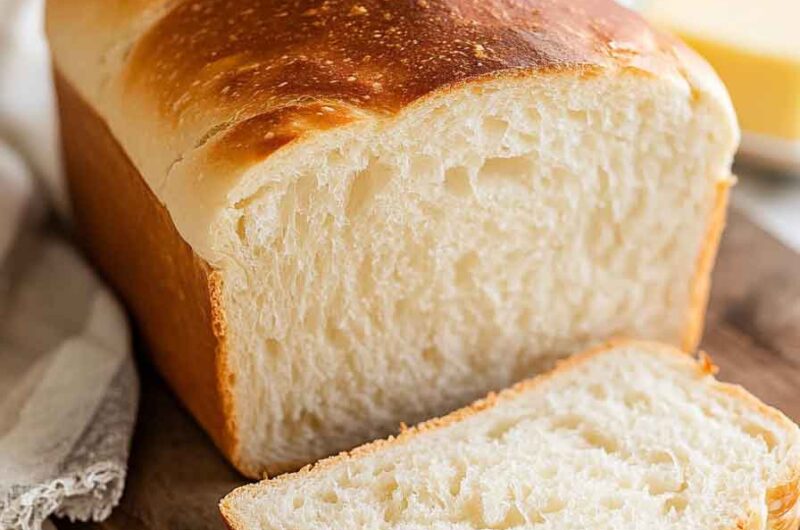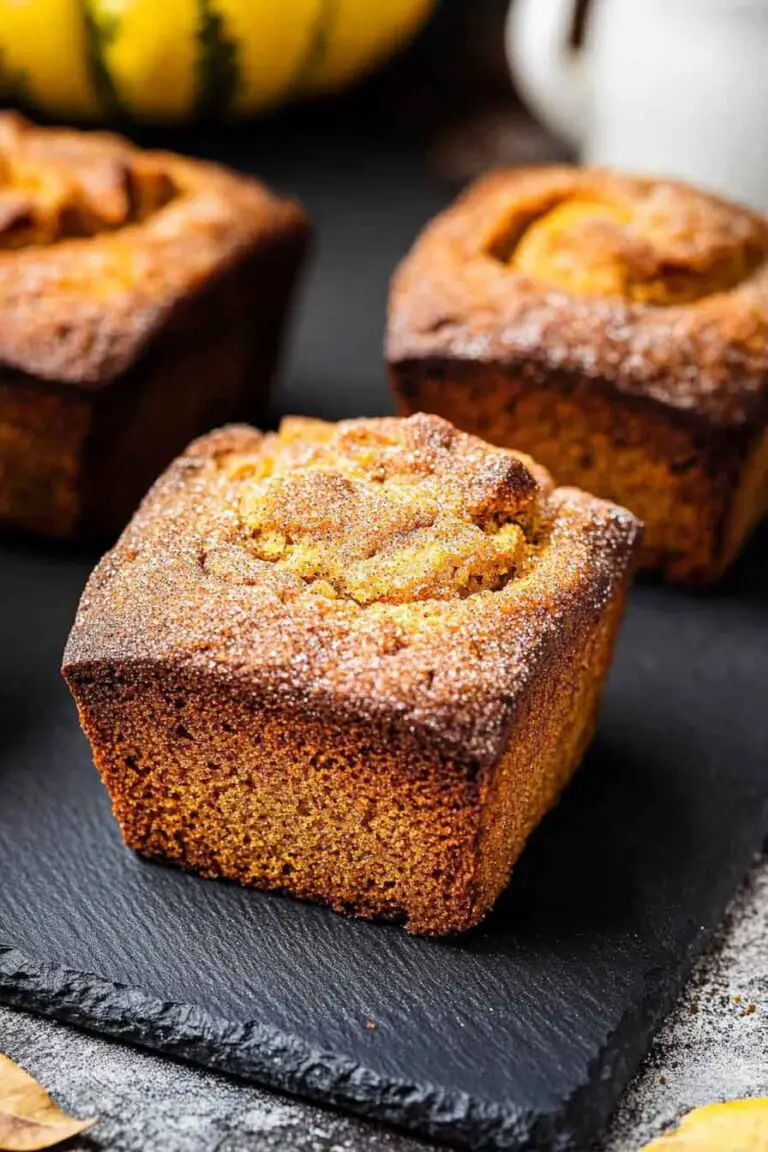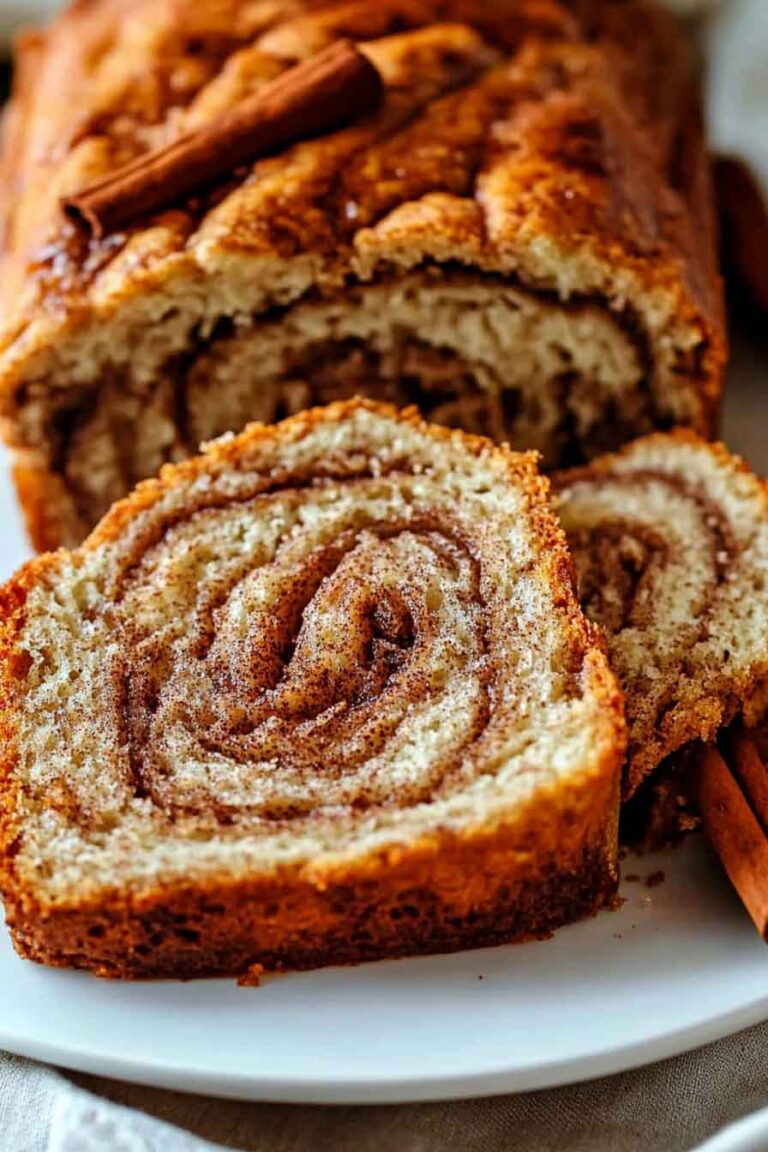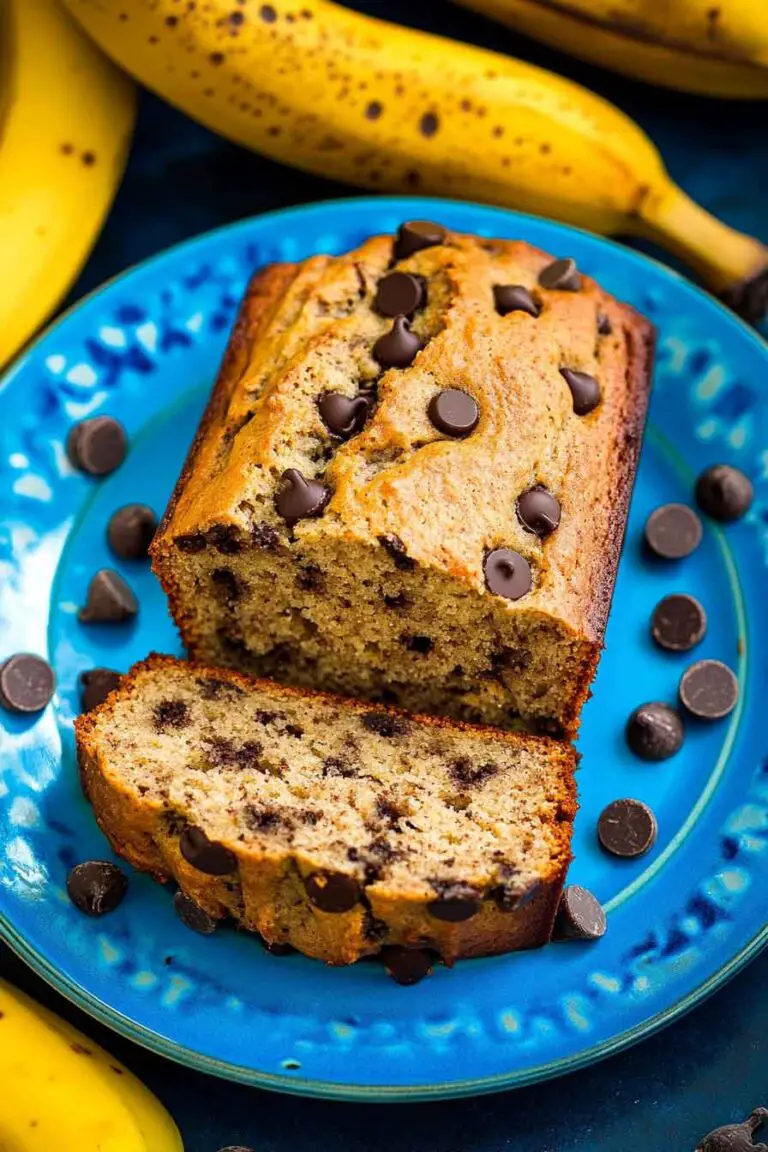White Bread Recipe (Soft and Fluffy)
Um, hey there! I just love the smell of fresh white bread, and I can’t wait to share my recipe with you. It’s so soft and fluffy. I have baked it many times, and oh my, it tastes so good. I want you to feel that cozy, happy feeling, too. It’s really easy to make. Let’s jump in, okay? Just follow my simple steps, and soon we’ll have yummy bread.
Why You’ll Love This Recipe
- Beginner-Friendly: Simple, straightforward method—even if you’ve never baked bread before.
- Soft and Fluffy Texture: The combination of yeast and butter creates a tender, light loaf.
- Pantry Staples: Made with ingredients you likely already have at home—no special trips to the store.
- Perfect for Any Meal: Great for sandwiches, morning toast, or paired with soups and stews.
- Customizable: Easy to adjust for smaller loaves or to add flavors like herbs or cheese.

What You Need to Know Before You Start
Prep Time & Cook Time:
- Prep Time: 20 minutes (plus 1.5 to 2 hours rising time)
- Bake Time: 30 minutes
- Total Time: About 3 hours (including rising time)
Servings:
- Makes 1 standard loaf (about 12 slices). You can double the recipe for two loaves if needed.
Difficulty:
- Easy: Straightforward enough for beginners, yet satisfying for experienced bakers.
Required Kitchen Tools
Here are the essential tools you’ll need to make this homemade white bread:
- Large Mixing Bowl: For combining and kneading the dough.
- Measuring Cups and Spoons: To ensure accurate ingredient amounts.
- Loaf Pan (9×5 inch): Standard size for baking the bread.
- Wooden Spoon or Dough Hook: For mixing the ingredients.
- Clean Kitchen Towel: To cover the dough while it rises.
- Cooling Rack: For cooling the bread after baking.
- Bench Scraper (Optional): Helpful for handling and shaping the dough.
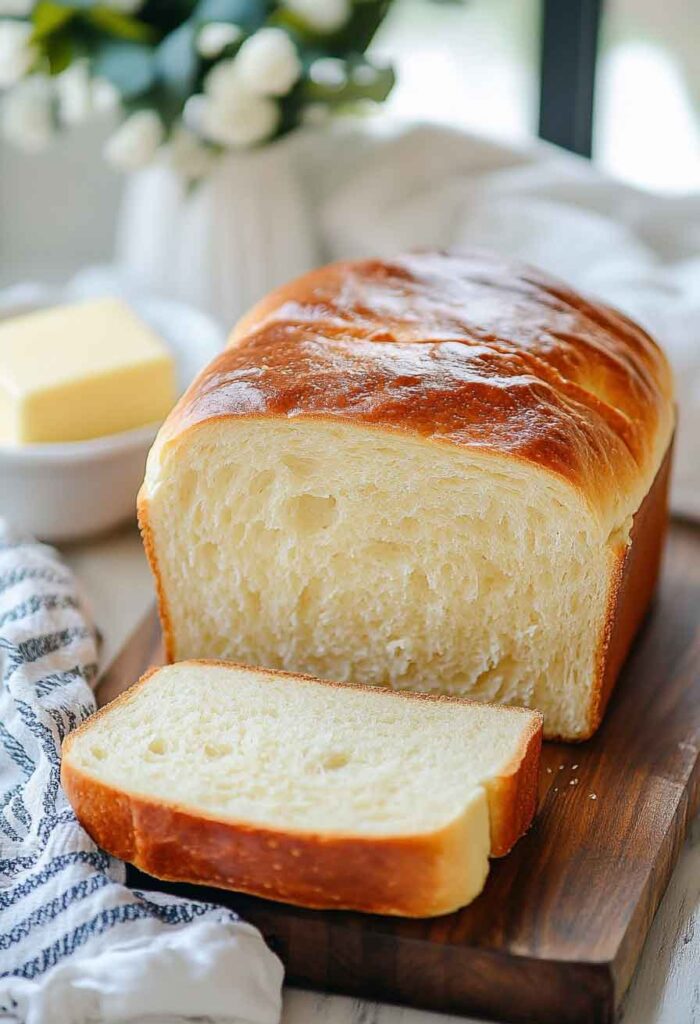
Ingredients for White Bread
Here’s what you’ll need to create this soft and tender bread (exact measurements will be in the recipe card below):
- Water: Warm water helps activate the yeast.
- Granulated Sugar: Feeds the yeast and adds slight sweetness.
- Active Dry Yeast: The key leavening agent that makes the bread rise.
- All-Purpose Flour: The main structure of the bread.
- Salt: Enhances the overall flavor.
- Butter: Adds richness and helps create a soft texture.
Variations for White Bread
- Herb Bread: Add 1 to 2 teaspoons of dried herbs like rosemary, thyme, or oregano to the dough for an aromatic twist.
- Cheese Bread: Mix in ½ cup of shredded cheddar or mozzarella for a cheesy loaf.
- Honey Bread: Substitute sugar with honey for a deeper, natural sweetness—use equal amounts.
- Whole Wheat Mix: For a heartier loaf, swap up to half of the all-purpose flour with whole wheat flour.
- Garlic Butter Crust: Brush the top of the loaf with melted garlic butter as soon as it comes out of the oven for added flavor.
How to Make White Bread: Step-by-Step Instructions

1. Activate the Yeast
In a large mixing bowl, combine warm water (about 110°F/43°C), sugar, and yeast. Stir gently and let it sit for 5-10 minutes until the mixture becomes foamy. This step ensures the yeast is active.
2. Mix the Dough
Once the yeast is bubbly, add melted butter, salt, and about half of the flour. Stir well using a wooden spoon or dough hook attachment if using a stand mixer. Gradually add the remaining flour until the dough starts pulling away from the sides of the bowl.
3. Knead the Dough
Transfer the dough onto a lightly floured surface. Knead for about 8-10 minutes by hand (or 5 minutes in a stand mixer) until the dough is smooth and elastic. If it’s too sticky, add a tablespoon of flour at a time, but avoid adding too much to keep the bread soft.
4. First Rise (Proof the Dough)
Place the kneaded dough into a lightly greased bowl. Cover with a clean kitchen towel and let it rise in a warm place for 1 to 1.5 hours, or until doubled in size.
5. Shape the Dough
Once risen, punch down the dough gently to release air. Turn it out onto a floured surface and shape it into a log, tucking in the sides as you roll. Place the shaped dough into a greased 9×5-inch loaf pan.
6. Second Rise (Final Proof)
Once the dough is shaped and placed in the loaf pan, cover it again with a clean kitchen towel. Let it rise in a warm place for another 30 to 45 minutes, or until the dough has risen slightly above the edge of the pan. This step gives the bread its final shape and softness.
7. Preheat the Oven
While the dough is going through its second rise, preheat your oven to 350°F (175°C). Make sure the oven is fully heated before you place the bread inside to ensure even baking.
8. Bake the Bread
Place the risen loaf in the center of the preheated oven. Bake for 28 to 32 minutes, or until the top is golden brown and the bread sounds hollow when tapped gently.
9. Cool the Bread
Once baked, remove the loaf from the oven and carefully turn it out onto a cooling rack. Let it cool completely before slicing to ensure the crumb sets properly. Cutting too soon might cause the inside to become gummy.
Serving and Decoration
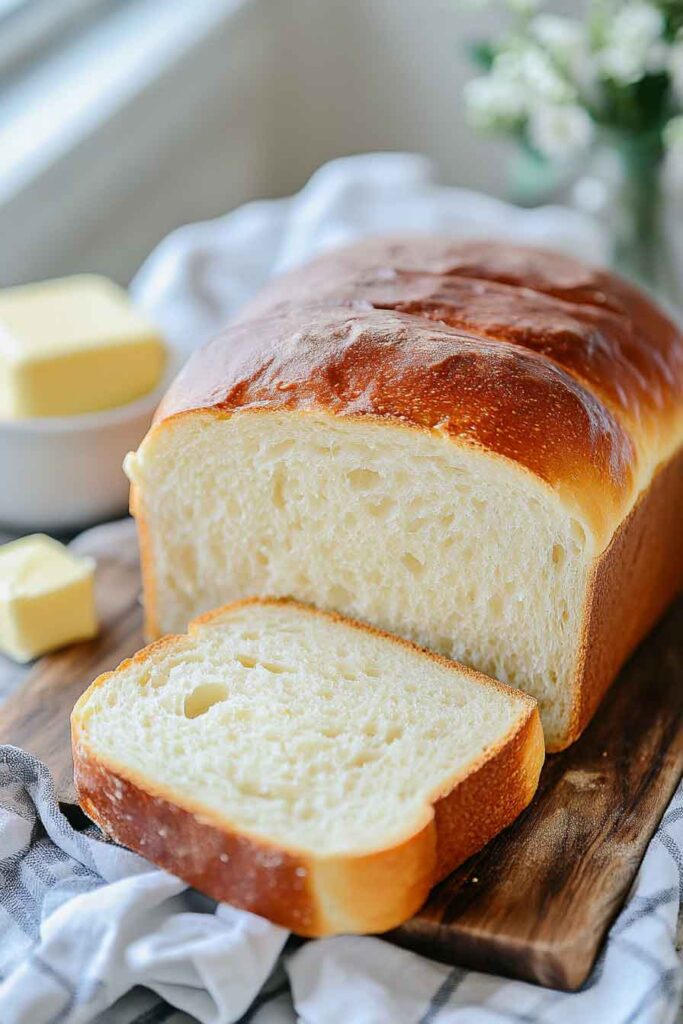
How to Serve White Bread
White Bread is a versatile loaf and can be enjoyed in many ways:
- For Breakfast: Toast slices and spread with butter, jam, or honey.
- For Sandwiches: Perfect for deli sandwiches, grilled cheese, or classic PB&J.
- With Soups and Stews: Serve thick slices alongside hearty soups like tomato or chicken noodle.
- As a Snack: Lightly toast and drizzle with olive oil or garlic butter for a quick savory snack.
Optional Toppings:
- Butter Brush: For a soft crust, brush melted butter over the loaf right after baking.
- Sesame Seeds: Sprinkle sesame seeds on top before baking for added texture.
- Egg Wash: For a shiny, golden top, brush lightly with an egg wash (1 egg beaten with 1 tablespoon water) before placing in the oven.
Storing White Bread
How to Store
- Room Temperature: Store the cooled bread in an airtight container or bread bag at room temperature for up to 3 days. Keep it away from heat and sunlight to prevent drying out.
- Freezing: For longer storage, slice the bread and freeze the slices in a freezer-safe bag. They’ll keep for up to 2 months. Toast slices straight from the freezer when needed.
- Refrigeration (Not Recommended): Avoid storing bread in the refrigerator, as it can dry out and become stale faster.
Reheating Tips
- To Soften: Wrap slices in a damp paper towel and microwave for 10-15 seconds to soften if they’ve dried slightly.
- To Toast: Use a toaster or oven to bring back a bit of crunch.
Nutrition Information
| Nutrient | Amount per Slice (1 of 12 slices) |
|---|---|
| Calories | 130 kcal |
| Carbohydrates | 23 g |
| Protein | 4 g |
| Fat | 3 g |
| Saturated Fat | 2 g |
| Cholesterol | 8 mg |
| Sodium | 190 mg |
| Fiber | 1 g |
| Sugar | 2 g |
Note: Nutrition values are approximate and may vary based on exact ingredient measurements.
White Bread Recipe (Soft and Fluffy)
Course: Uncategorized1 loaf (12 )
slices20
minutes30
minutes130
kcalIngredients
1 cup (240 ml) warm water (about 110°F/43°C)
2 tablespoons (25 g) granulated sugar
2 ¼ teaspoons (7 g) active dry yeast (1 packet)
3 cups (360 g) all-purpose flour (plus more as needed)
1 teaspoon (6 g) salt
2 tablespoons (28 g) unsalted butter, melted
Directions
- Activate Yeast:
In a large bowl, mix warm water, sugar, and yeast. Stir and let sit for 5-10 minutes until foamy. - Mix Dough:
Add melted butter, salt, and half of the flour. Stir until combined. Gradually add remaining flour until dough comes together. - Knead Dough:
Turn onto a floured surface. Knead for 8-10 minutes until smooth and elastic. - First Rise:
Place in a greased bowl, cover, and let rise in a warm place until doubled, about 1 to 1.5 hours. - Shape Dough:
Punch down dough. Shape into a loaf and place in a greased 9×5-inch loaf pan. - Second Rise:
Cover and let rise for 30-45 minutes until slightly above the pan. - Bake:
Preheat oven to 350°F (175°C). Bake for 28-32 minutes until golden brown. - Cool:
Remove from pan. Cool completely on a rack before slicing.
White Bread FAQs
1. Can I use instant yeast instead of active dry yeast?
Yes, you can use instant yeast in equal amounts. If using instant yeast, you can skip the step of dissolving it in water first and mix it directly with the flour and other ingredients.
2. Why didn’t my bread rise?
This could be due to inactive yeast, water that was too hot or too cold, or a cold environment for rising. Always ensure the water is warm but not hot, and check that your yeast is fresh.
3. Can I make this bread dairy-free?
Absolutely. You can replace the butter with an equal amount of neutral oil, like vegetable oil or olive oil, to keep it dairy-free.
4. How do I know when the bread is fully baked?
The loaf should be golden brown on top, and when tapped on the bottom, it should sound hollow. You can also check with a thermometer—internal temperature should be around 190°F (88°C) when done.
5. Can I double the recipe?
Yes, this recipe doubles well. Just make sure to divide the dough evenly into two loaf pans and bake as directed, possibly adding a few extra minutes if needed.
Conclusion
Homemade White Bread is a simple yet satisfying recipe that’s perfect for everyday use. With a soft, tender crumb and rich flavor, this bread is great for sandwiches, toast, or enjoyed on its own with butter. Making bread from scratch might seem intimidating, but with this step-by-step guide, it becomes an easy and rewarding experience.
Whether you’re baking for the first time or adding to your collection of homemade staples, this white bread is sure to become a household favorite. Try it once, and you may never go back to store-bought again.



